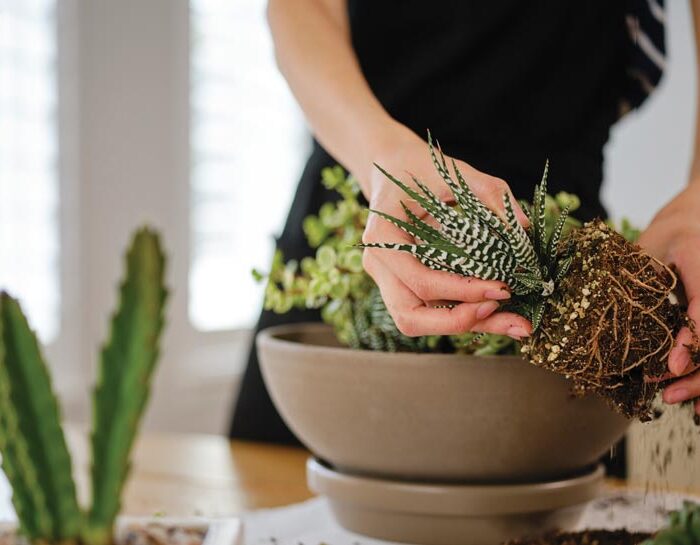Succulents 101
By Laura Duggan
By Laura Duggan


SUCCULENTS ARE A diverse group of plants. From the rosette shaped echeverias to the tiny clusters of leaves and flowers on a sedum, or the thick, spiky shoots of aloe, there is no shortage of striking shapes and interesting textures to adorn your windowsills. Planted alone in a simple terra-cotta pot or in a group nestled artfully into a large planter, succulents have become extremely popular plants for their ease of care.
The word succulent is derived from the Latin word sucus, meaning juice or sap. Able to withstand a dry, desert climate, succulents store water in their fleshy leaves or stems enabling them to survive when water is scarce. While it is impossible to replicate that climate in your own home, it is important to have a desert mindset when caring from them. Bathing them in sunlight and keeping them a little bit thirsty will ensure your plants remain healthy and happy.
Succulents are best planted in pots with a drainage hole and a potting mix that, in addition to soil, has equal parts perlite, pumice, or sand to prevent it from retaining water. Water the plant by thoroughly saturating the root, and then let the soil dry out completely before watering again. Sticking a toothpick into the drainage hole like a cake tester will aid in determining if the soil is still damp or loose and dry. Although a variety of factors, including the size of your pot, will determine how often to water, err on the side of under-watering. If the bottom leaves lose their color, are soft or mushy to the touch, or fall off easily, this is a sure sign that the plant is getting too much water. Watch your plants closely for signs of overwatering to avoid root rot as this is hard to recover from. Alternatively, under-watered plants will have leaves that look flat and wrinkled instead of plump and full.
It is no surprise that succulents love sunlight. Place them near your brightest, sunniest window to give them as much light as possible. A succulent that is not getting enough light will start to become thin, weak, and stretched in height. This rapid, leggy growth—a process called etiolation—is the result of a plant reaching toward the sun. Moving the plant to a location that receives a minimum of four to six hours of bright sunlight and regularly rotating it will help keep it healthy and compact. To save an etiolated succulent, simply cut off the top rosette or crown including about 2 inches of stem and remove the lower leaves. Let the cut end dry out before replanting.
While succulents are low maintenance, they do require attention. A lot of sun and little water go a long way to keep your succulents thriving.
For more information on caring for succulents, the Chicago Botanic Garden is holding a “Succulents 101” online class on February 20. To register, visit chicagobotanic.org.

Sign Up for the JWC Media Email